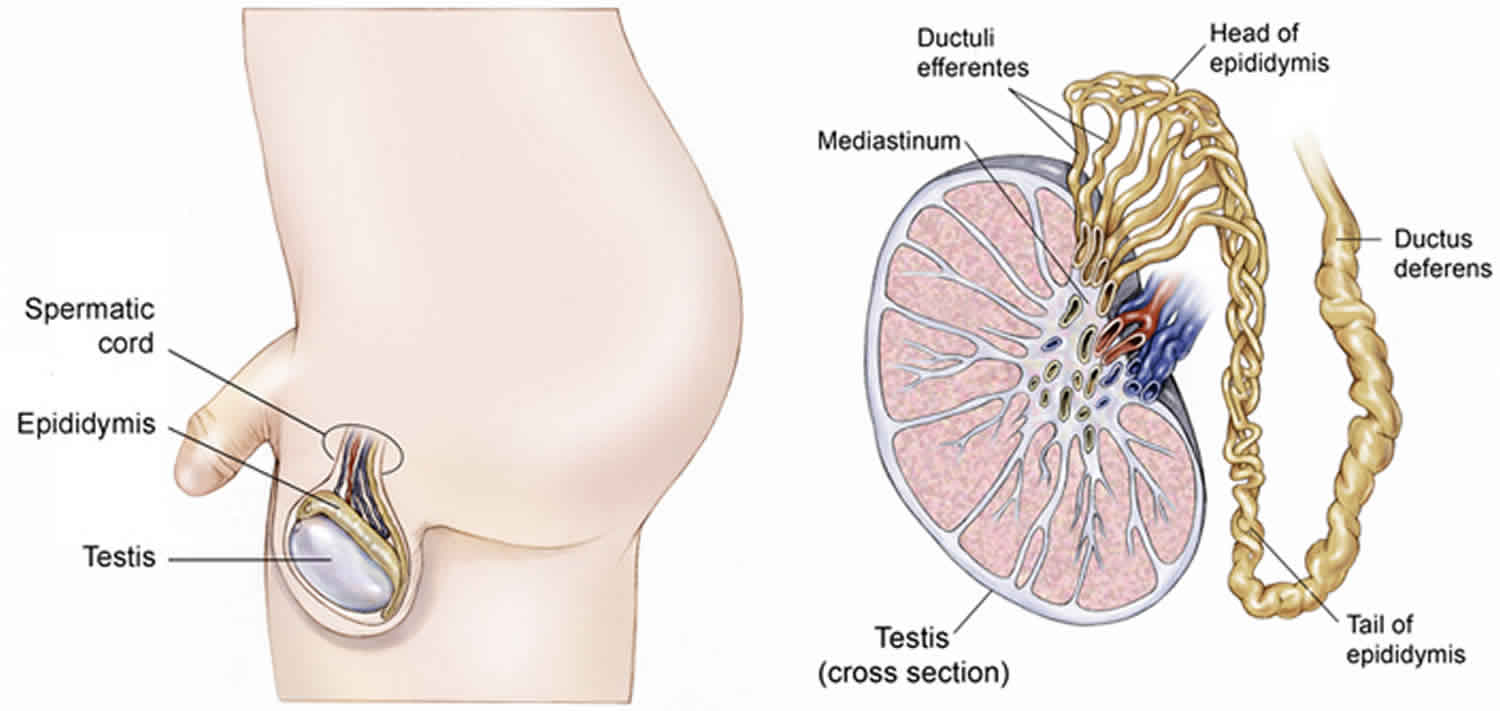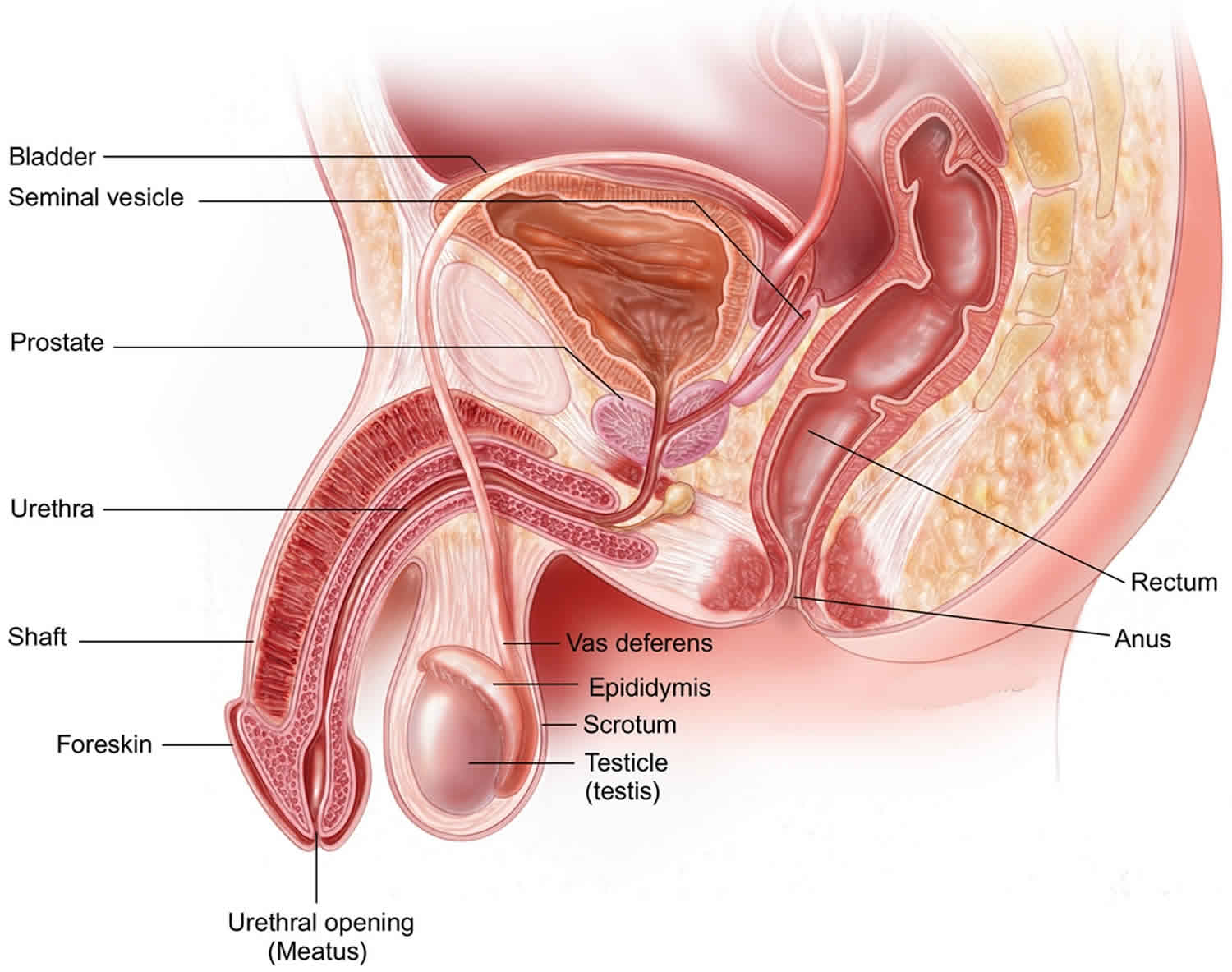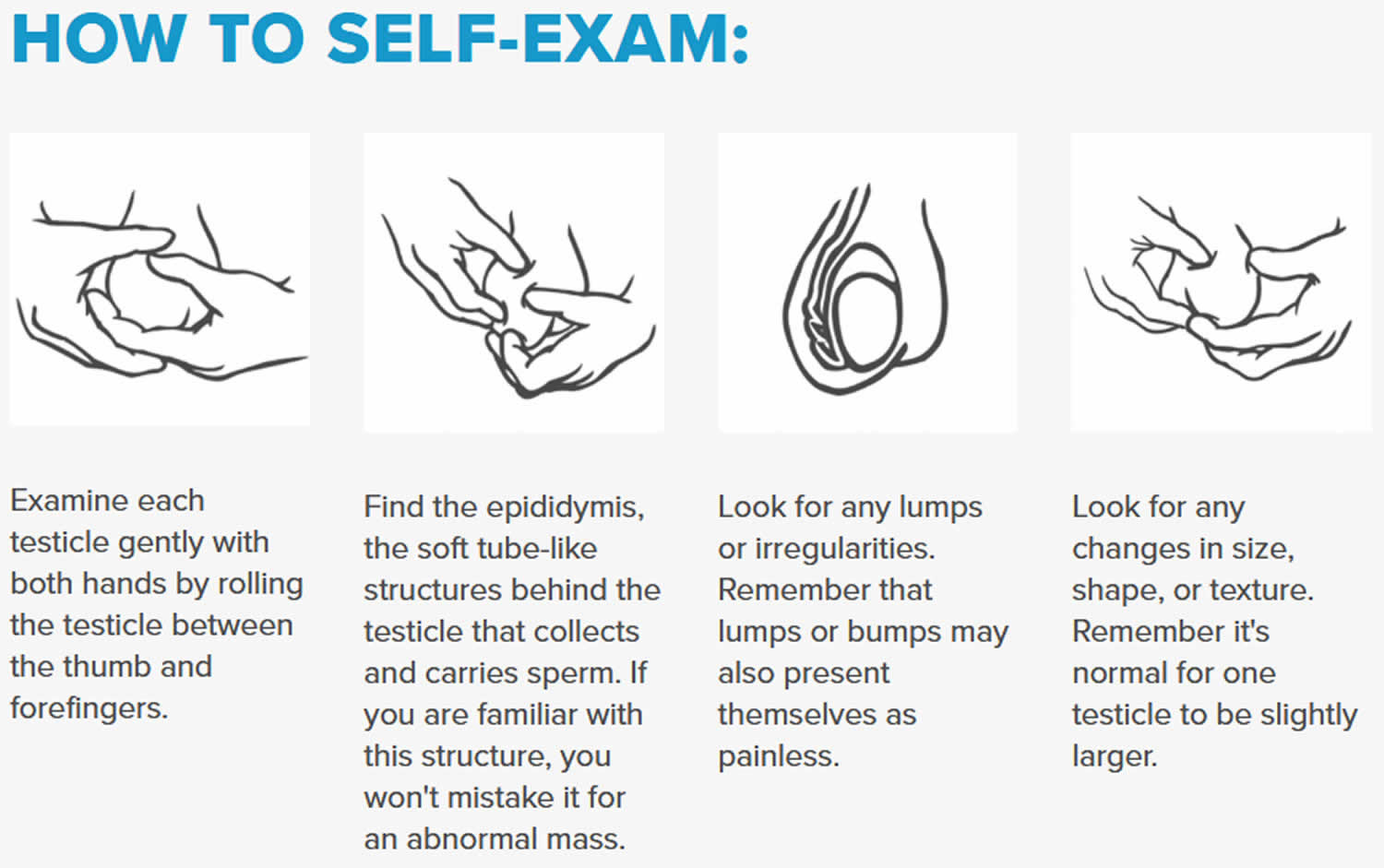Contents
Testicular self examination
Most testicular cancers can be found at an early stage, when they’re small and haven’t spread. Most of the time a lump on the testicle is the first symptom, or the testicle might be swollen or larger than normal. But some testicular cancers might not cause symptoms until they’ve reached an advanced stage. Testicular cancer is usually found as a result of symptoms that a person is having. It can also be found when tests are done for another condition.
No studies have been done to find out if testicular self-exams, regular exams by a doctor, or other screening tests in men with no symptoms would decrease the risk of dying from testicular cancer. However, routine screening probably would not decrease the risk of dying from testicular cancer. This is partly because testicular cancer can usually be cured at any stage. Finding testicular cancer early may make it easier to treat. Patients who are diagnosed with testicular cancer that has not spread to other parts of the body may need less chemotherapy and surgery, resulting in fewer side effects.
Most doctors agree that examining a man’s testicles should be part of a general physical exam during a routine check-up. This can help find cancer at an early stage. When abnormal tissue or cancer is found early, it may be easier to treat. By the time symptoms appear, cancer may have begun to spread.
Some doctors recommend that all men examine their testicles monthly after puberty. Each man has to decide for himself whether or not to do this. If you have certain risk factors that increase your chance of developing testicular cancer such as an undescended testicle, previous germ cell tumor in one testicle, or a family history, you should seriously consider monthly self-exams and talk about it with your doctor.
Testicular cancer key points
- Testicular cancer is a disease in which malignant (cancer) cells form in the tissues of one or both testicles.
- Testicular cancer is the most common cancer in men aged 15 to 34 years. Testicular cancer is very rare, but it is the most common cancer found in men between the ages of 15 and 34. White men are four times more likely than black men to have testicular cancer
- Testicular cancer can usually be cured. Although the number of new cases of testicular cancer has doubled in the last 40 years, the number of deaths caused by testicular cancer has decreased greatly because of better treatments. Testicular cancer can usually be cured, even in late stages of the disease.
- A condition called cryptorchidism (an undescended testicle) is a risk factor for testicular cancer. Anything that increases the chance of getting a disease is called a risk factor. Having a risk factor does not mean that you will get cancer; not having risk factors doesn’t mean that you will not get cancer. Talk to your doctor if you think you may be at risk. Risk factors for testicular cancer include the following:
- Having cryptorchidism (an undescended testicle).
- Having a testicle that is not normal, such as a small testicle that does not work the way it should.
- Having testicular carcinoma in situ.
- Being white.
- Having a personal or family history of testicular cancer.
- Having Klinefelter syndrome.
- Men who have cryptorchidism, a testicle that is not normal, or testicular carcinoma in situ have an increased risk of testicular cancer in one or both testicles, and need to be followed closely.
Testicle anatomy
The testicles are 2 egg-shaped glands inside the scrotum (a sac of loose skin that lies directly below the penis). The testicles are held within the scrotum by the spermatic cord. The spermatic cord also contains the vas deferens and vessels and nerves of the testicles.
The testicles are the male sex glands and make testosterone and sperm. Germ cells in the testicles make immature sperm. These sperm travel through a network of tubules (tiny tubes) and larger tubes into the epididymis (a long coiled tube next to the testicles). This is where the sperm mature and are stored.
Almost all testicular cancers start in the germ cells. The two main types of testicular germ cell tumors are seminomas and nonseminomas.
Figure 1. Male reproductive system
Figure 2. Testis anatomy
Figure 3. Testicular cancer
How does testicular cancer present itself?
Testicular cancer can present in two ways, it can be an isolated lump that will not spread and can be removed along with one testicle or it can be the type of cancer that can spread to the lymph nodes. The latter is more aggressive and may lead to removal of the testicle, some lymph nodes and a period of chemotherapy and radiotherapies to prevent any risk of cancer spreading. Fortunately, the chances of cancer recurring in most cases is very low. The best diagnostic tool for both types is a scan, which is the most comprehensive way to determine if a person has testicular cancer. A blood test can also be an indicator of cancer as high hCG (human chorionic gonadotropin) levels can also be a symptom.
Signs and symptoms of testicular cancer
Many of these symptoms are more likely to be caused by something other than testicular cancer. A number of non-cancerous conditions, such as testicle injury or inflammation, can cause symptoms a lot like those of testicular cancer. Inflammation of the testicle (known as orchitis) and inflammation of the epididymis (epididymitis) can cause swelling and pain of the testicle. Both of these also can be caused by viral or bacterial infections.
Some men with testicular cancer have no symptoms at all, and their cancer is found during medical testing for other conditions. For instance, sometimes imaging tests done to find the cause of infertility can uncover a small testicular cancer.
But if you have any of these signs or symptoms, see your doctor right away.
Lump or swelling in the testicle
Most often, the first symptom of testicular cancer is a lump on the testicle, or the testicle becomes swollen or larger. It’s normal for one testicle to be slightly larger than the other, and for one to hang lower than the other. Some testicular tumors might cause pain, but most of the time they don’t. Men with testicular cancer can also have a feeling of heaviness or aching in the lower belly (abdomen) or scrotum.
Breast growth or soreness
In rare cases, germ cell tumors can make breasts grow or become sore. This happens because certain types of germ cell tumors secrete high levels of a hormone called human chorionic gonadotropin (HCG), which stimulates breast development.
Some Leydig cell tumors can make estrogens (female sex hormones), which can cause breast growth or loss of sexual desire.
Early puberty in boys
Some Leydig cell tumors can make androgens (male sex hormones). Androgen-producing tumors may not cause any symptoms in men, but in boys they can cause signs of puberty at an abnormally early age, such as a deepening voice and the growth of facial and body hair.
Symptoms of advanced testicular cancer
Even if testicular cancer has spread to other parts of the body, many men might not have symptoms right away. But some men might have some of the following:
- Low back pain, from cancer spread to the lymph nodes (bean-sized collections of immune cells) in back of the belly.
- Shortness of breath, chest pain, or a cough (even coughing up blood) may develop from cancer spread in the lungs.
- Belly pain, either from enlarged lymph nodes or because the cancer has spread to the liver.
- Headaches or confusion, from cancer spread in the brain.
Testicular cancer diagnosis
The next step is an exam by a doctor. Your doctor will feel the testicles for swelling or tenderness and for the size and location of any lumps. The doctor will also examine your belly (abdomen), lymph nodes, and other parts of your body carefully to look for signs of cancer spread. Often the results of the exam are normal other than the changes in the testicles. If a lump or other sign of testicular cancer is found, testing will be needed to look for the cause.
Ultrasound of the testicles
An ultrasound is often the first test done if the doctor thinks you might have testicular cancer. It uses sound waves to produce images of the inside of your body. It can be used to see if a change is a certain benign condition (like a hydrocele or varicocele) or a solid tumor that could be a cancer. If the lump is solid, it’s more likely to be a cancer. In this case, the doctor might recommend other tests or even surgery to remove the testicle.
Blood tests for tumor markers
Some blood tests can help diagnose testicular tumors. Many testicular cancers make high levels of certain proteins called tumor markers, such as alpha-fetoprotein (AFP) and human chorionic gonadotropin (HCG). When these tumor markers are in the blood, it suggests that there’s a testicular tumor.
Rises in levels of AFP (alpha-fetoprotein) or human chorionic gonadotropin (HCG) can also help doctors tell which type of testicular cancer it might be.
- Non-seminomas often raise alpha-fetoprotein (AFP) and/or human chorionic gonadotropin (HCG) levels.
- Pure seminomas occasionally raise HCG levels but never AFP levels.
This means any increase in AFP is a sign that the tumor has a non-seminoma component. (Tumors can be mixed and have areas of seminoma and non-seminoma.) Sertoli and Leydig cell tumors don’t make these substances. It’s important to note that some cancers are too small to elevate tumor markers levels.
A testicular tumor might also increase the levels of an enzyme called lactate dehydrogenase (LDH). A high LDH (lactate dehydrogenase) level often (but not always) indicates widespread disease. But, LDH levels can also be increased with some non-cancerous conditions.
Tumor marker tests sometimes are also used for other reasons, such as to help estimate how much cancer is present to see how well treatment is working, or to look for signs the cancer might have come back.
Surgery to diagnose testicular cancer
Most types of cancer are diagnosed by removing a small piece of the tumor and looking at it under a microscope for cancer cells. This is known as a biopsy. But a biopsy is rarely done for a testicular tumor because it might risk spreading the cancer. The doctor can often get a good idea of whether it’s testicular cancer based on the ultrasound and blood tumor marker tests, so instead of a biopsy the doctor will very likely recommend surgery (a radical inguinal orchiectomy) to remove the tumor as soon as possible.
The entire testicle is sent to the lab, where a pathologist (a doctor specializing in laboratory diagnosis of diseases) looks at pieces of the tumor with a microscope. If cancer cells are found, the pathologist sends back a report describing the type and extent of the cancer.
In very rare cases, when a diagnosis of testicular cancer is uncertain, the doctor may biopsy the testicle before removing it. This is done in the operating room. The surgeon makes a cut above the pubic area, takes the testicle out of the scrotum, and examines it without cutting the spermatic cord. If a suspicious area is seen, a piece of it is removed and looked at right away by the pathologist. If cancer is found, the testicle and spermatic cord are then removed. If the tissue is not cancer, the testicle can often be returned to the scrotum.
If testicular cancer is found, your doctor will order imaging tests of other parts of your body to check for spread outside the testicle. These tests may also be done before the diagnosis is confirmed by surgery.
Imaging tests
Imaging tests use x-rays, magnetic fields, sound waves, or radioactive substances to create pictures of the inside of your body. Ultrasound of the testicles, described above, is a type of imaging test. Other imaging tests may be done for a number of reasons after a testicular cancer diagnosis, including:
- To learn if and how far the cancer might have spread
- To help determine if treatment worked
- To look for possible signs of cancer coming back after treatment
Chest x-ray
- Your chest may be x-rayed to see if cancer has spread to your lungs.
Computed tomography (CT) scan
- CT scans can be used to help determine the stage (extent) of the cancer by showing if it has spread to the lymph nodes, lungs, liver, or other organs.
Magnetic resonance imaging (MRI) scan
- MRI scans are very good for looking at the brain and spinal cord. They are only done in patients with testicular cancer if the doctor has reason to think the cancer might have spread to those areas.
Positron emission tomography (PET) scan
- A PET scan can help spot small collections of cancer cells in the body. It’s sometimes useful to see if lymph nodes that are still enlarged after chemotherapy contain cancer or are just scar tissue. PET scans are often more useful for seminomas than for non-seminomas, so they are less often used in patients with non-seminoma. Many centers have special machines that can do both a PET and CT scan at the same time (PET/CT scan). This lets the doctor compare areas of higher radioactivity on the PET with the more detailed images of the CT.
Bone scan
- A bone scan can help show if a cancer has spread to the bones. It might be done if there is reason to think the cancer might have spread to the bones (because of symptoms such as bone pain) and if other test results aren’t clear.
How to perform testicular self exam
The best time for you to examine your testicles is during or after a bath or shower, when the skin of the scrotum is relaxed.
- Hold your penis out of the way and examine each testicle separately.
- Hold your testicle between your thumbs and fingers with both hands and roll it gently between your fingers.
- You need to proceed from top to bottom. The best way to do this is starting at the top of the testicle and squeezing it in a rotational movement all the way down to the bottom. It’s not the most pleasant of sensations, which means a lot of men do not examine their scrotum properly. While it may be uncomfortable, it is a really good habit to get into as it could very well save your life.
- Look and feel for any hard lumps or nodules (smooth rounded masses) or any change in the size, shape, or consistency of your testicles.
It’s normal for one testicle to be slightly larger than the other, and for one to hang lower than the other. You should also be aware that each normal testicle has a small, coiled tube called the epididymis that can feel like a small bump on the upper or middle outer side of the testis. Normal testicles also contain blood vessels, supporting tissues, and tubes that carry sperm. Some men may confuse these with abnormal lumps at first. If you have any concerns, ask your doctor.
A testicle can get larger for many reasons other than cancer. For example, fluid can collect around the testicle to form a hydrocele. Or the veins in the testicle can dilate and cause enlargement and lumpiness around the testicle. This is called a varicocele. If your testicle seems larger, have a doctor examine you to be sure you have one of these conditions and not a tumor. The doctor may order an ultrasound exam. This is an easy and painless way of finding a tumor.
If you choose to examine your testicles regularly, you will get to know what’s normal and what’s different. Always report any changes to your doctor without delay.









